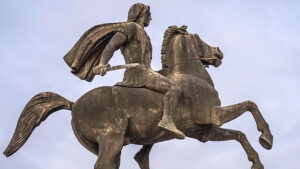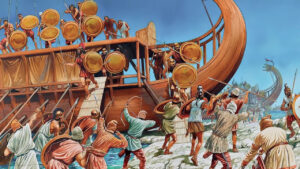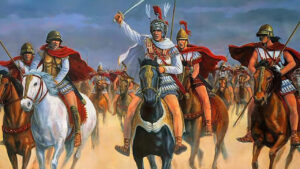 Iran, formerly known as Persia, has a rich history that dates back over 2,000 years. The Persian Empire, one of the world’s most powerful empires, emerged in the middle of the first millennium BCE and controlled parts of Central Asia, the Middle East, and North Africa for more than 500 years. From its artistic, architectural, and scientific achievements to its conquests and cultural influence, here are 10 majestic facts about the Persian Empires.
Iran, formerly known as Persia, has a rich history that dates back over 2,000 years. The Persian Empire, one of the world’s most powerful empires, emerged in the middle of the first millennium BCE and controlled parts of Central Asia, the Middle East, and North Africa for more than 500 years. From its artistic, architectural, and scientific achievements to its conquests and cultural influence, here are 10 majestic facts about the Persian Empires.
1. The Achaemenid Empire was the largest empire of the Ancient World.
The Achaemenid Empire, founded by Cyrus the Great in 550 BCE, spanned three continents – Asia, Europe, and Africa – and ruled over an estimated 40% of the world’s population at the time.
2. Persian art influenced the entire Near East.
Persian art, characterized by intricate patterns, animal motifs, and scenes from everyday life, had a significant impact on the aesthetics of the Near East, from Mesopotamia to India.
3. Persian architecture is known for its stately columns and ornamental facades.
One of the most remarkable features of Persian architecture is the use of massive, fluted columns made of stone, which supported great halls and palaces. The facades of these buildings were adorned with elaborate carvings, tiles, and mosaics.
4. Persian carpets are among the finest in the world.
Persian carpets, woven by skilled artisans using traditional techniques, are prized for their intricate designs, vibrant colors, and excellent quality. They are considered some of the finest in the world.
5. The Persian Empire was a melting pot of cultures and religions.
The Persian Empire was home to many different ethnic groups and religions, from Zoroastrians to Jews, Christians, and Buddhists. This diversity contributed to the development of a rich and cosmopolitan society.
6. The Persian Empire built an impressive network of roads and canals.
Under the Achaemenid Empire, a vast network of roads and canals was built to facilitate trade and communication between different parts of the empire. This infrastructure continued to be used for centuries after the fall of the empire.
7. The Persian Empire was a scientific powerhouse.
The Persian Empire produced many renowned scholars and scientists, including Al-Khwarizmi, who invented algebra, and Al-Razi, who made important contributions to medicine and chemistry.
8. Persian soldiers were feared for their archery skills.
Persian soldiers were known for their exceptional archery skills, which they honed through rigorous training and practice. They were also renowned for their use of horseback riding in warfare.
9. The Persian Empire was one of the first to use coins for currency.
The Achaemenid Empire was one of the first civilizations to use coins for currency. These coins were stamped with images of the king or queen, and were used to facilitate trade.
10. The Persian Empire’s influence can still be felt today.
The Persian Empire’s legacy can be seen in the region’s art, cuisine, and language. Persian poetry, music, and literature continue to be celebrated around the world, and the Persian language remains an important cultural and geopolitical tool in the Middle East today.
In conclusion, the Persian Empires left behind an impressive legacy that continues to inspire and intrigue people around the world. From its vast empires and impressive architecture to its scientific and cultural achievements, there is no doubt that the Persian Empires played a significant role in shaping our world today.



